Via Ferrata!
Something that is almost as much fun to say as it is to climb. Almost.
What is a Via Ferrata?
A Via Ferrata, Italian for “the way of iron,” is just that – It's a passage through cliffs utilizing iron bars bolted into the rocks (although in this particular instance, it's stainless steel). Via Ferratas exist all over the world, but are most associated with Europe, with several famous locations featuring breathtaking heights. This style of climbing rose to prominence as a practical method of transporting soldiers through impassable locations during World War I.
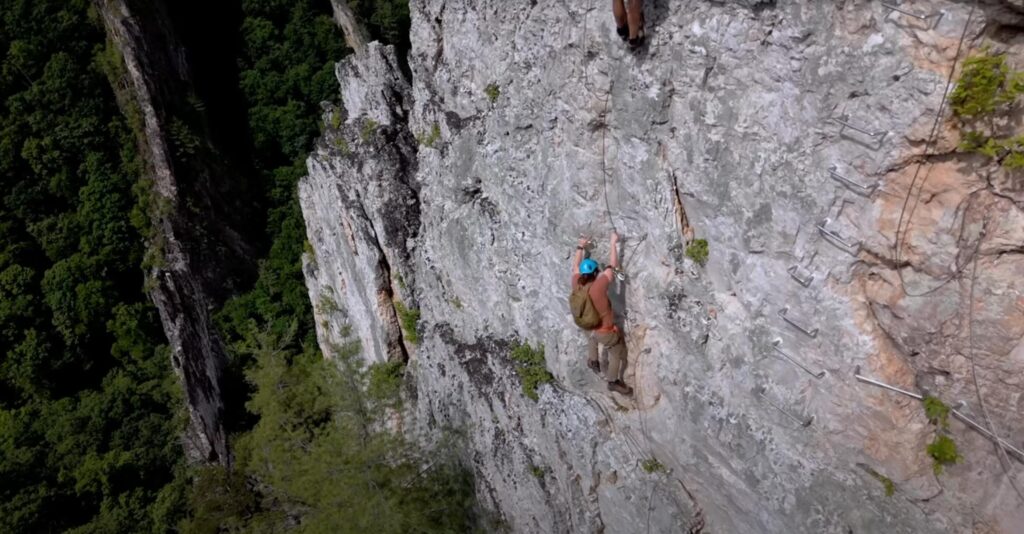
A Via Ferrata utilizes a climbing harness with two short leashes attached to your harness, which are then clipped in to a steel cable running the length of the climbing route, which is bolted in as well. The idea is that you clip and unclip these leashes into new segments of cable individually, so you will never be without at least one connection to the cliff face.
Physically speaking, climbing is about as strenuous as climbing a ladder. The challenge here is much more mental, offering new climbers a chance to see incredible heights they might not otherwise be able to climb in a traditional rock climbing setting.
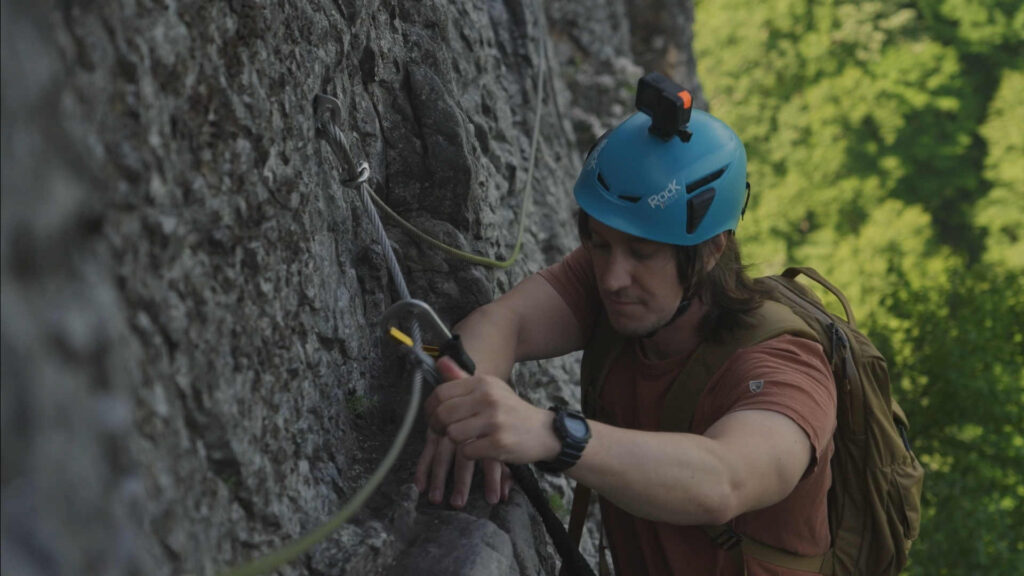
Climbing NRocks
NRocks is situated on two unique rock formations in the mountains of West Virginia. The rocks rise up from a mountain top like two massive fins, giving me four cliff faces to make my way across.
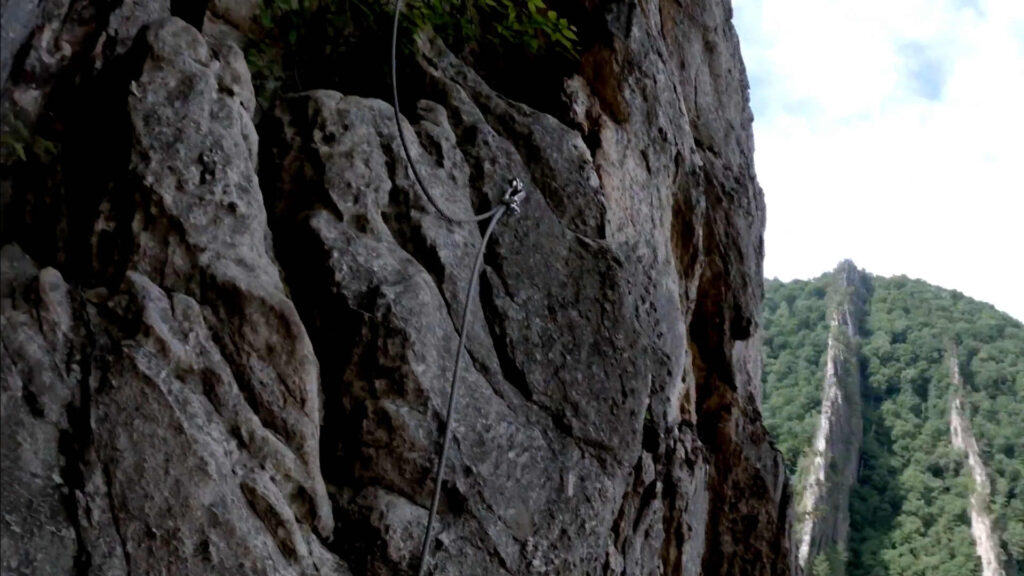
The climb begins with a few short-ish climbs up the backside of the first fin, maybe 20 to 30 feet up, broken up by some parallel movement across the rock face. As I climb, I notice that the ground beneath me as rising as I climb higher and higher, giving the illusion that I'm not really climbing that much at all…. At least until I round the corner through a section they call the Key Hole.
Upon making my way through, I am greeted by a gorgeous view of the sun illuminating the valley below, as well as a more accurate understanding of the heights I've ascended. It's a beautiful scene, but the climb is just beginning!
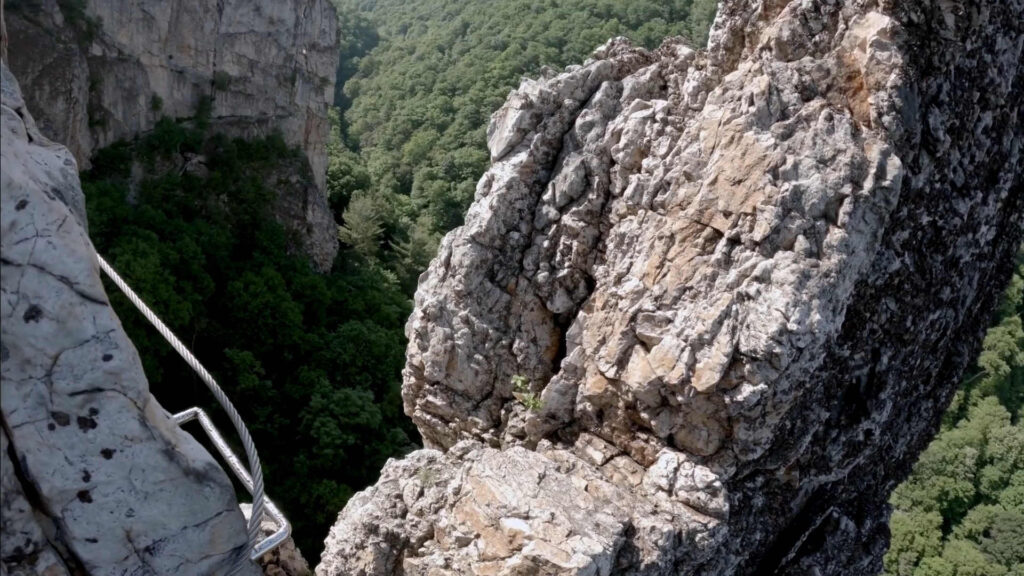
The Bridge
After a short parallel traversal, I make it to a 200 foot suspension bridge that connects the two fins. The bridge is supported by steel cables, and has wooden slats with a significant gap between them. I felt very much like Indiana Jones here, though thankfully, nobody was trying to cut the ropes.
I found that the bridge sways in the breeze a bit more than expected as I felt every gust of wind. My footsteps, too, sent me swinging back and forth – especially towards the center. I had a great time trying to walk across with no hands, but to no avail. My balance needs work.
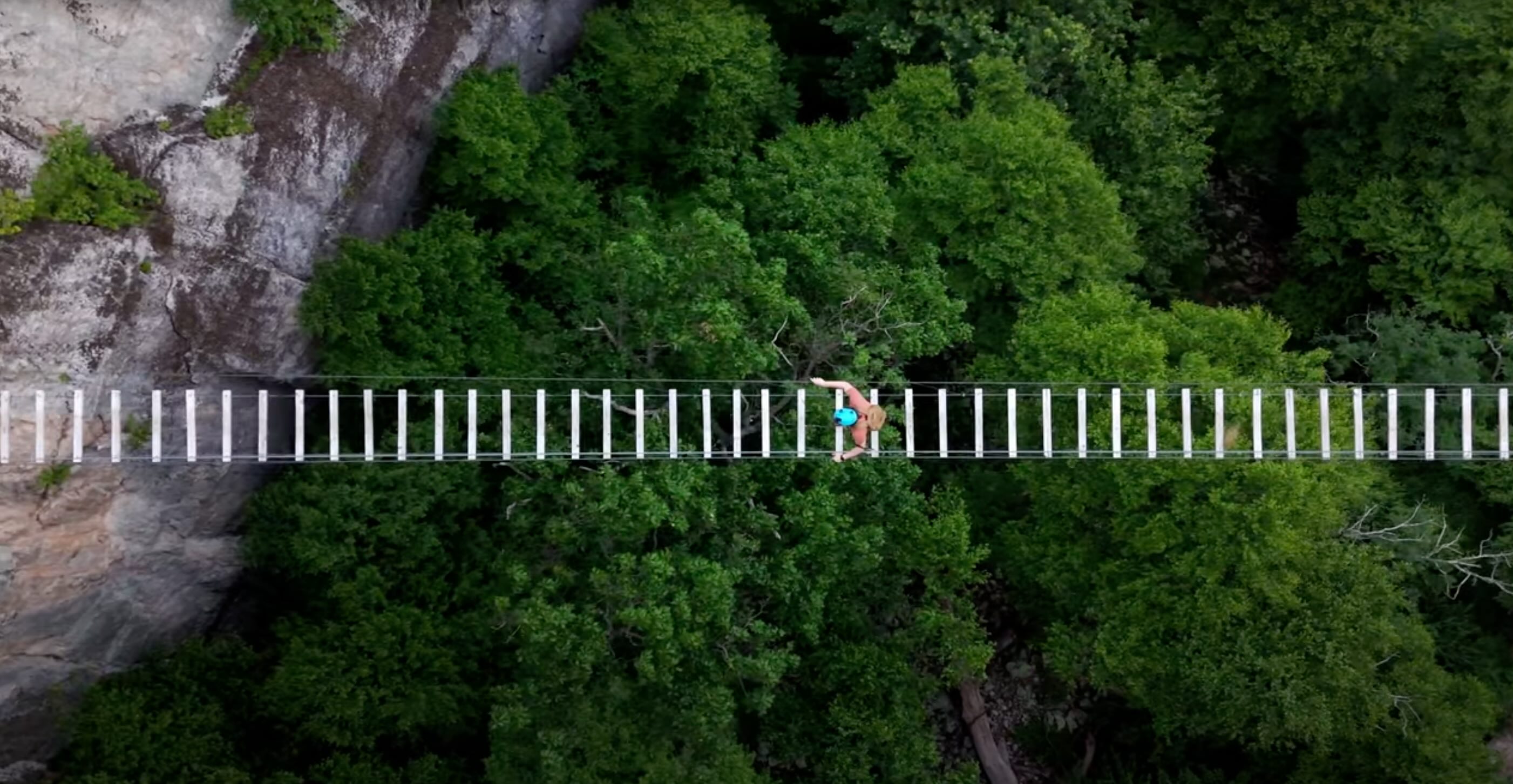
The Head Wall
After the bridge, the path becomes steeper as we head towards the summit. After a few short uphills we arrive at the Head Wall. The Head Wall is imposing, to say the least. It was wild to feel so high above the ground on the bridge, only to look up and see this massive chunk of rock extending higher and higher into the sky.
Climbing the Head Wall is a straight up bomb to the top. There are no parallel sections to acclimate, it's just 100% climbing – so settle in and start going one hand after the other.
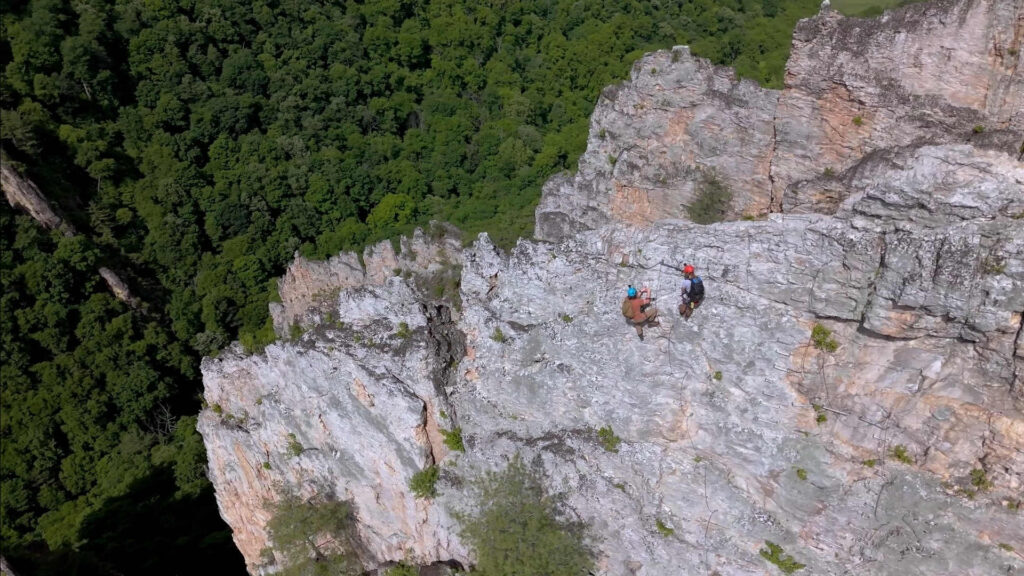
The climb is the most mentally straining of the day, though it is physically very easy. Getting to the top offers some of the most beautiful views in West Virginia. The fin is only 6-8 feet wide, giving you a sense of exposure unmatched by simply standing at the edge of a cliff.
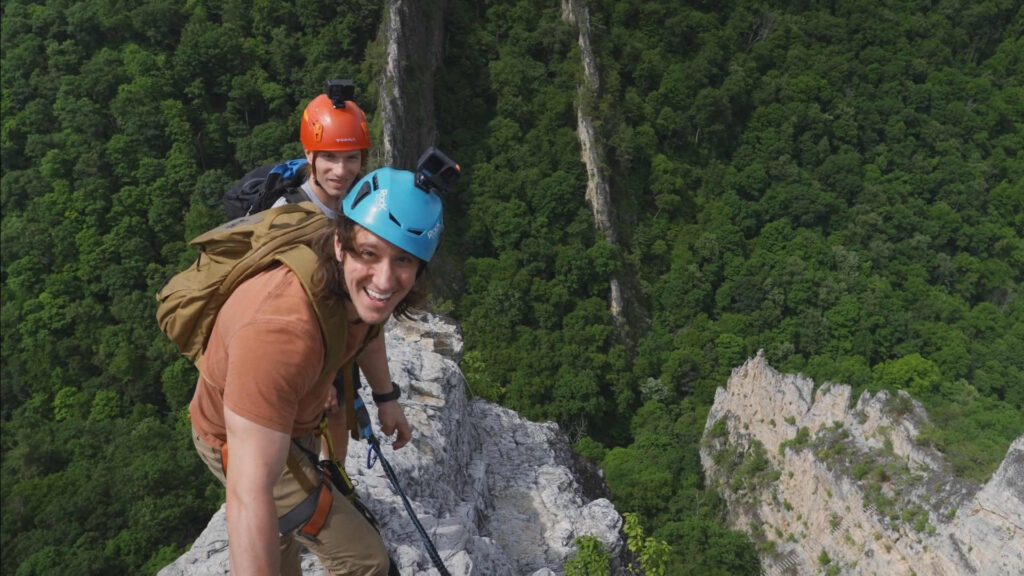
Should You Try a Via Ferrata
A Via Ferrata offers the same heights you would find on the more extreme end of rock climbing, without utilizing any of the advanced skills required to get to that level of climbing. If you can take the height, then you should absolutely give this a try!
If you are a little more height-averse, then a Via Ferrata may actually be the kind of exposure therapy you need. It's amazing just how acclimated you can become to the heights!








